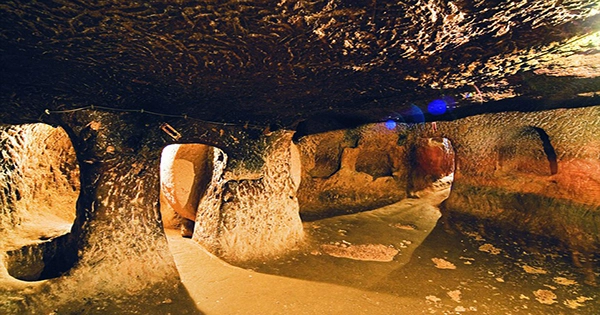In 1963, a guy in Turkey’s Nevşehir Province demolished a wall in his basement and discovered a massive underground metropolis. The man sledgehammered his wall and discovered a tunnel behind it, followed by further tunnels, according to reports from the period. Exploration would eventually show that it was an 18-story underground metropolis with chapels, schools, and stables.
The city, known as Derinkuyu, had been abandoned for generations, which was presumably a comfort to the man who’d just smashed his way in. According to archaeologists at the Turkish Department of Culture, work on the city, which could contain up to 20,000 people, began as early as the 8th–7th century BCE. Despite the fact that the rock, which was created by volcanic ash deposits, was soft, the Phrygians who started the construction didn’t go very far. The underground houses were roughly big enough for a family, household animals, and food, according to a document from around 370 BCE that may depict Derinkuyu.
The city was transformed into a labyrinth of tunnels, chambers, and rooms encompassing 445 kilometers2 (172 miles2) during the Byzantine period (from 395 CE to 1453 CE). Hidden entrances, ventilation shafts (for not dying in your mole cave), and wells and water conduits were all part of the network of tunnels and passages. People in the region most likely originally exploited the soft rock for food storage, storing food at cool and steady temperatures. However, the cities they became were most likely owing to their defense value.
Those who lived on the bottom levels, for example, were able to turn off the water supply to the higher and ground levels, preventing poisoning. The tunnels could be shut from the inside with spherical rolling stone doors, and the passages were small enough that any intruders would have to line up one at a time – an attack scheme so terrifying that it is only shown in movies when the good man is encircled. Throughout the years, various individuals sought refuge in the city. Early Christians stayed there to escape Roman persecution, while Muslims utilized it as a safe haven during the Arab-Byzantine wars of 780 and 1180.
As late as 1909, caves identical to these were utilized to hide from danger — Derinkuyu isn’t even the largest underground city. “When word of the recent atrocities at Adana reached Axo, a large portion of the inhabitants sought sanctuary in these underground rooms, and for some nights did not attempt to sleep above ground,” wrote Cambridge linguist Richard MacGillivray Dawkins of his visit to Greece. “It appears that the inhabitants lived solely in these underground shelters until recently, with no buildings above ground.”
















